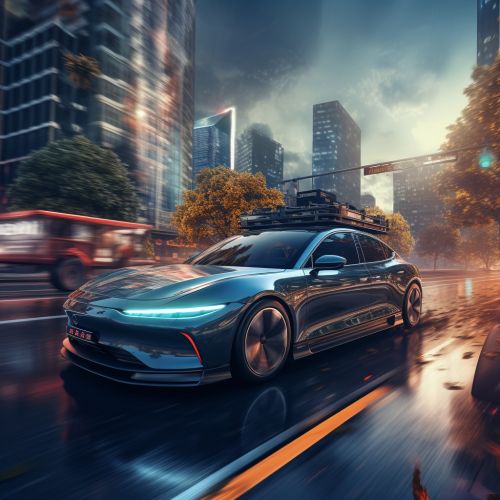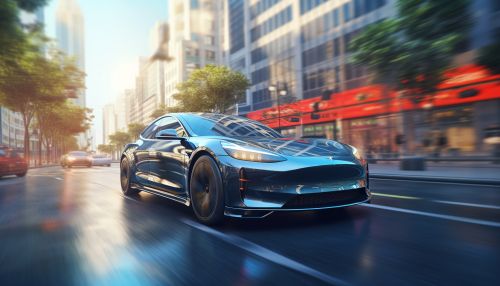Computer Vision in Autonomous Vehicles
Introduction
Computer Vision is a field of artificial intelligence (AI) that trains computers to interpret and understand the visual world. In autonomous vehicles, computer vision is used to accurately identify objects, track their movements, and navigate accordingly. This technology is a fundamental part of autonomous vehicle systems, enabling them to make sense of their surroundings and make decisions based on that information.


Understanding Computer Vision
Computer vision involves the acquisition, processing, and analysis of digital images to understand the environment. It uses machine learning algorithms to interpret images from the real world and translate them into data. This data is then used to make decisions or predictions. In the context of autonomous vehicles, computer vision is used to identify and track objects, recognize traffic signs and signals, and understand road conditions.
Components of Computer Vision
The primary components of computer vision include image acquisition, image processing, and image analysis and understanding.
- Image Acquisition: This is the process of capturing an image in the form of digital data. In autonomous vehicles, this is typically done using cameras and other sensors such as LiDAR and RADAR.
- Image Processing: Once the image data is captured, it is then processed to enhance image quality and extract useful information. This can involve noise reduction, contrast enhancement, and edge detection.
- Image Analysis and Understanding: This is the final step where the processed images are analyzed using machine learning algorithms. The goal is to identify and classify objects, understand their spatial relationships, and make predictions about their future movements.
Role of Computer Vision in Autonomous Vehicles
Computer vision plays a crucial role in the functioning of autonomous vehicles. It is used for tasks such as object detection, lane detection, traffic sign recognition, and depth perception.
Object Detection
Object detection is the process of identifying and locating objects in an image. In autonomous vehicles, computer vision is used to detect other vehicles, pedestrians, cyclists, and any other objects that might be present on the road. This is crucial for safe navigation and collision avoidance.
Lane Detection
Lane detection is the task of identifying the boundaries of driving lanes in an image. This is important for maintaining the vehicle within its lane and for safe lane changes.
Traffic Sign Recognition
Traffic sign recognition involves identifying and understanding the meaning of traffic signs. This is essential for obeying traffic rules and regulations.
Depth Perception
Depth perception is the ability to perceive the distance of an object. In autonomous vehicles, computer vision is used to estimate the distance of objects from the vehicle. This is important for determining the speed and direction of the vehicle.
Challenges in Implementing Computer Vision in Autonomous Vehicles
While computer vision has greatly advanced the capabilities of autonomous vehicles, there are still several challenges that need to be addressed. These include dealing with varying lighting conditions, handling occlusions, and coping with dynamic environments.
Varying Lighting Conditions
One of the major challenges in implementing computer vision in autonomous vehicles is dealing with varying lighting conditions. Changes in lighting can significantly affect the quality of captured images, making it difficult for the computer vision system to accurately identify and track objects.
Handling Occlusions
Occlusions occur when an object is partially or completely hidden by another object. This can make it difficult for the computer vision system to accurately identify and track the occluded object.
Dynamic Environments
Autonomous vehicles operate in dynamic environments where objects are constantly moving and changing. This can pose a challenge for computer vision systems, as they need to continuously update their understanding of the environment.
Future of Computer Vision in Autonomous Vehicles
The future of computer vision in autonomous vehicles looks promising, with advancements in AI and machine learning expected to further improve the capabilities of these systems. Future developments may include improved object detection and tracking, better handling of varying lighting conditions and occlusions, and more accurate depth perception.
